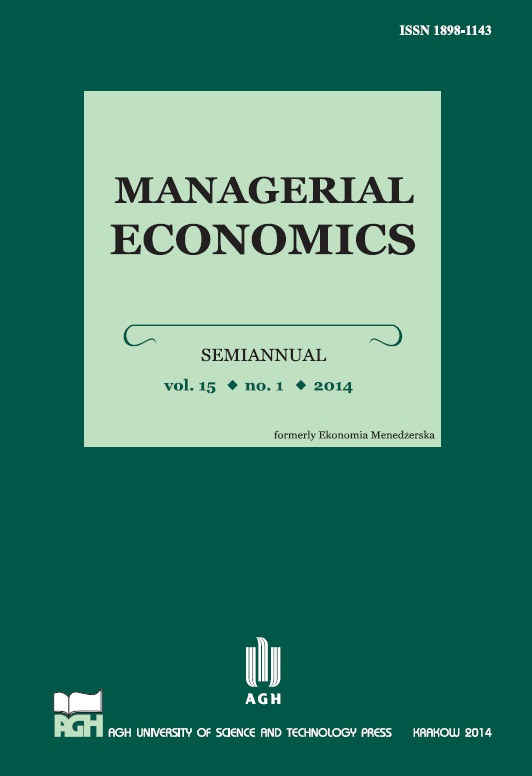Wavelet-based forecasting of ARIMA time series - an empirical comparison of different methods
DOI:
https://doi.org/10.7494/manage.2014.15.1.107Keywords:
forecasting, wavelets, denoising, multiscale analysisAbstract
By means of wavelet transform, an ARIMA time series can be split into different frequency components. In doing so, one is able to identify relevant patters within this time series, and there are different ways to utilize this feature to improve existing time series forecasting methods. However, despite a considerable amount of literature on the topic, there is hardly any work that compares the different wavelet-based methods with each other. In this paper, we try to close this gap. We test various wavelet-based methods on four data sets, each with its own characteristics. Eventually, we come to the conclusion that using wavelets does improve forecasting quality, especially for time horizons longer than one-day-ahead. However, there is no single superior method: either wavelet-based denoising or wavelet-based time series decomposition is best. Performance depends on the data set as well as the forecasting time horizon.Downloads
Download data is not yet available.
Downloads
Issue
Section
Articles
License
Download, sign, scan and attach copyright statement form.
How to Cite
Schlueter, S., & Deuschle, C. (2014). Wavelet-based forecasting of ARIMA time series - an empirical comparison of different methods. Managerial Economics, 15(1), 107. https://doi.org/10.7494/manage.2014.15.1.107

